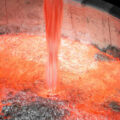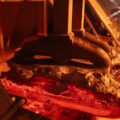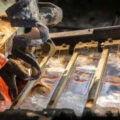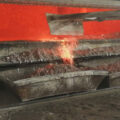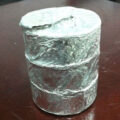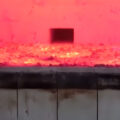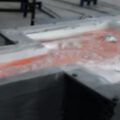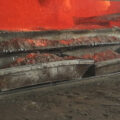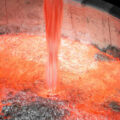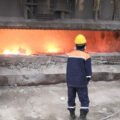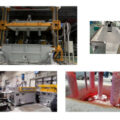For non-metallic inclusions, the use of gas refining methods can be effectively removed. For the more demanding materials, the CFF filtration method is best way for impurities removal in aluminum alloy by mechanical filtration through the molten aluminum layer.
For metal impurities, the general treatment method is to turn harmful factors into favorable factors. That is, it is converted into a beneficial second phase by the alloying method to facilitate the performance of the material. If it must be removed, in most cases, the boiling point difference of different elements is used for high temperature and low pressure selective distillation to achieve the purpose of removing metal impurities.

Impurities Removal in Aluminum Alloy
Aluminum alloys smelted from aluminum-containing scraps often contain excessive metal elements and should be removed as much as possible. Selective oxidation can be used to remove various metal impurities from the melt that have a greater affinity for oxygen than aluminum. For example, magnesium, zinc, calcium, zirconium and other elements can accelerate the oxidation of these impurity elements by stirring the melt. These metal oxides do not dissolve in the aluminum liquid and enter the slag, so that they can be melted from aluminum by skimming the slag Remove from the body.
It is also possible to use the difference in solubility to remove metal impurities in the alloy. For example, the aluminum alloy contaminated with impurities is eutectic with a metal that can dissolve aluminum well without dissolving impurities, and then the aluminum alloy liquid is separated by filtration, and then the added metal is removed by vacuum distillation. Usually, magnesium, zinc and mercury are added to remove iron, silicon and other impurities in aluminum, and then these metals are removed by vacuum distillation.
For example, after the aluminum alloy contaminated with impurities is eutectic with 30% magnesium, the alloy is allowed to stand at a temperature near the eutectic temperature for a period of time, the primary precipitated crystal phases containing iron and silicon are filtered out, and then vacuum stripped at 850 ℃ Magnesium, impurities such as zinc and lead with high vapor pressure are also removed together with magnesium, and the pure aluminum alloy after magnesium removal can be cast ingot.
In order to further improve the quality of the aluminum alloy liquid, or when certain grades of aluminum alloy require strict control of the hydrogen content and inclusions, the joint refining method can be used, that is, two refining methods are used simultaneously. For example, chloride salt-filtration combined refining, argon blowing-flux combined refining, on-line degassing and filtration equipments can achieve better results than single refining.

